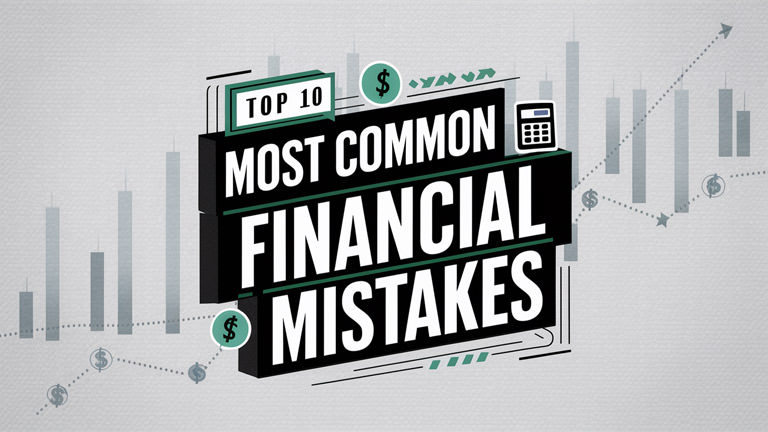Understanding Mutual Funds
A mutual fund is an investment vehicle where money from multiple investors is pooled together and managed by professional money managers. These funds trade on exchanges and provide investors with access to a diversified mix of assets, which are selected based on the fund’s investment objectives. The fund’s assets and goals are detailed in a document called the prospectus.

Investing in mutual funds offers several advantages, such as automatic investing from paychecks and lower investment risks compared to buying individual stocks. This is primarily because mutual funds hold a diverse range of assets, reducing the impact of any single investment’s poor performance.
Key Takeaways
- Diversified Portfolio: Mutual funds invest in a mix of stocks, bonds, or other securities, providing a diversified portfolio.
- Professional Management: Managed by professional fund managers who make investment decisions based on the fund’s strategy.
- Types of Mutual Funds: Vary by the securities they invest in, their investment objectives, and the returns they seek.
- Fees: Mutual funds charge fees and commissions, which can impact overall returns.
- Retirement Investment: Many Americans invest in mutual funds through employer-sponsored retirement plans, offering a form of automatic investing that builds wealth over time with less risk.
History and Popularity
In 1980, less than 6% of U.S. households had money in mutual funds. By 2023, this number had grown to about 52%, with these households holding 88% of all mutual fund assets. Mutual funds have become a staple investment for middle-income Americans, offering access to a broad range of investments and helping reduce risk compared to investing in individual stocks or bonds.
How Mutual Funds Work
When you invest in a mutual fund, you buy shares that represent part-ownership of the fund’s portfolio. The value of your investment depends on the performance of the underlying assets. When these assets increase in value, so does the value of your shares, and vice versa.
The mutual fund manager oversees the portfolio, deciding how to allocate money across various sectors, industries, and companies. About half of the mutual funds held by American households are in index equity funds, which aim to mirror the performance of indices like the S&P 500 or the Dow Jones Industrial Average (DJIA). The largest mutual funds are managed by companies like Vanguard and Fidelity, primarily consisting of index funds.
How Are Earnings Calculated?
Investors earn returns from mutual funds in three ways:
- Dividend/Interest Income: Funds distribute dividends on stocks and interest on bonds held in the portfolio. Investors can choose to receive these distributions as cash or reinvest them for additional shares.
- Portfolio Distributions: When a fund sells securities that have appreciated, it realizes capital gains, which are passed on to investors.
- Capital Gains Distribution: If the fund’s shares increase in price, investors can sell their shares for a profit.
When researching mutual funds, the “total return” metric is often used. This figure includes interest, dividends, capital gains, and changes in market value over specific periods, typically one, five, and ten years, or since the fund’s inception.
Types of Mutual Funds
With over 8,700 mutual funds in the U.S., they can be categorized into four main types: stock, money market, bond, and target-date funds.
Stock Funds
Stock funds invest primarily in equities or stocks and come in various subcategories based on the size of the companies (small-cap, mid-cap, large-cap) and investment approach (aggressive growth, income-oriented, value). They can also be categorized by whether they invest in U.S. or foreign stocks.
- Value Funds: Invest in stocks considered undervalued, aiming for long-term appreciation.
- Growth Funds: Focus on companies with strong earnings, sales, and cash flow growth.
- Blend Funds: Combine value and growth stocks to balance risk and reward.
Bond Funds
Bond funds focus on investments that pay a set rate of return, such as government and corporate bonds. They aim to provide consistent returns with limited risk.
- Actively Managed Bond Funds: Seek undervalued bonds for profit, often with higher returns but more risk.
- Index Bond Funds: Replicate the performance of specific bond indices with lower management fees.
Index Mutual Funds
Index mutual funds aim to replicate the performance of a specific index, like the S&P 500 or DJIA. These funds have lower research and management costs, often resulting in lower fees for investors. They frequently outperform actively managed funds over the long term.
Balanced Funds
Balanced funds invest across different asset classes (stocks, bonds, money market) to reduce risk through diversification. These funds are known as asset-allocation funds and adjust their investment mix based on market conditions and investor objectives.
Money Market Mutual Funds
Money market funds invest in short-term, low-risk debt instruments like government Treasury bills. They offer modest returns slightly higher than savings accounts but are not FDIC-insured.
Income Funds
Income funds focus on generating steady income, primarily investing in government and high-quality corporate debt. Their main goal is to provide a consistent cash flow, making them popular for retirement investing.
International Mutual Funds
These funds invest in assets located outside the investor’s home country. Global funds can invest anywhere worldwide, offering diversification and potential growth from international markets.
Regional Mutual Funds
Regional funds focus on specific geographic regions, investing in companies within those areas. They allow investors to capitalize on regional growth but come with unique risks like political instability and currency fluctuations.
Sector and Theme Mutual Funds
Sector funds invest in specific economic sectors (e.g., technology, healthcare), while theme funds focus on broader themes (e.g., AI, green technology). These funds can be volatile and carry risks related to their focused investments.
Socially Responsible Mutual Funds
These funds invest based on ethical criteria, avoiding industries like tobacco and weapons. Sustainable funds focus on green technologies and companies with strong environmental, social, and governance (ESG) practices.
Mutual Fund Fees
Mutual funds charge various fees that can impact returns:
- Expense Ratio: Annual fee covering the fund’s operating expenses.
- Sales Charges (Loads): Fees charged when buying or selling shares.
- Redemption Fees: Fees for selling shares shortly after purchasing them.
- Other Fees: Account maintenance or transaction fees.
Classes of Mutual Fund Shares
Different share classes come with varying fee structures:
- Class A Shares: Often come with front-end loads and ongoing fees.
- Class B Shares: Charge fees when investors sell holdings.
- Class C Shares: Generally have no front-end load but carry annual fees.
How to Invest in Mutual Funds
Investing in mutual funds involves several steps:
- Check Employer Options: Employer-sponsored mutual funds might offer benefits like matching funds.
- Open a Brokerage Account: Ensure you have sufficient funds to invest.
- Identify Suitable Funds: Match funds to your investment goals.
- Submit Your Trade: Determine how much to invest and place your order.
- Monitor Performance: Periodically check fund performance and make adjustments.
How Mutual Fund Shares Are Priced
Mutual fund shares are priced based on the net asset value (NAV) per share, calculated by dividing the total value of the fund’s securities by the number of shares outstanding. Unlike stocks, mutual funds are priced once daily at the end of the trading day.
Pros and Cons of Mutual Fund Investing
Pros
- Liquidity: Easy to buy and sell.
- Diversification: Reduces risk through a mix of assets.
- Professional Management: Managed by experienced professionals.
- Variety: Wide range of investment options.
Cons
- Fees: Can reduce overall returns.
- Cash Drag: Required cash reserves earn no return.
- No FDIC Coverage: Not insured like bank deposits.
- Complexity: Comparing funds can be difficult.
- End-of-Day Trading Only: Cannot trade shares throughout the day.
Evaluating Mutual Funds
Researching and comparing mutual funds involves considering various factors, including fees, performance, and management. Tools like Morningstar ratings and prospectuses can provide valuable insights.
Example of a Mutual Fund
One notable example is Fidelity Investments’ Magellan Fund (FMAGX), established in 1963. Managed by Peter Lynch from 1977 to 1990, the fund’s assets grew from $18 million to $14 billion. As of March 2024, it has about $33 billion in assets.
Mutual Funds vs. Index Funds
Index funds replicate market benchmarks with lower costs, while actively managed mutual funds aim to outperform the market through strategic stock picking. Investors should consider costs, time horizons, and risk appetite when choosing between them.
Mutual Funds vs. ETFs
ETFs trade like stocks on exchanges, offering real-time pricing and flexibility. Mutual funds are priced at the end of the trading day based on NAV. ETFs often have lower expenses and tax advantages.
Are Mutual Funds Safe Investments?
Mutual funds involve risk, but diversification and professional management can mitigate some of these risks. They are not FDIC-insured, so it’s crucial to understand the specific risks associated with each fund.
Can I Withdraw Money From a Mutual Fund Anytime?
Yes, mutual funds are generally liquid, but early withdrawals may incur fees or tax implications, especially if the investment has appreciated in value.
Do You Actually Make Money in Mutual Funds?
Yes, many investors make money through capital gains, dividends, and interest income. However, returns are not guaranteed and depend on market conditions and the fund’s management.
What Are the Risks of Mutual Funds?
Mutual funds carry market, interest rate, and management risks. It’s important to review the fund’s prospectus and consider your risk

Roger Varley is a seasoned financial expert with over two decades of experience and an MBA from Harvard Business School. He specializes in commodity trading and portfolio diversification, and has authored several bestsellers that simplify complex financial concepts for investors. Residing in New York City, Roger continues to share his knowledge through his writing and lectures at financial conferences worldwide.



